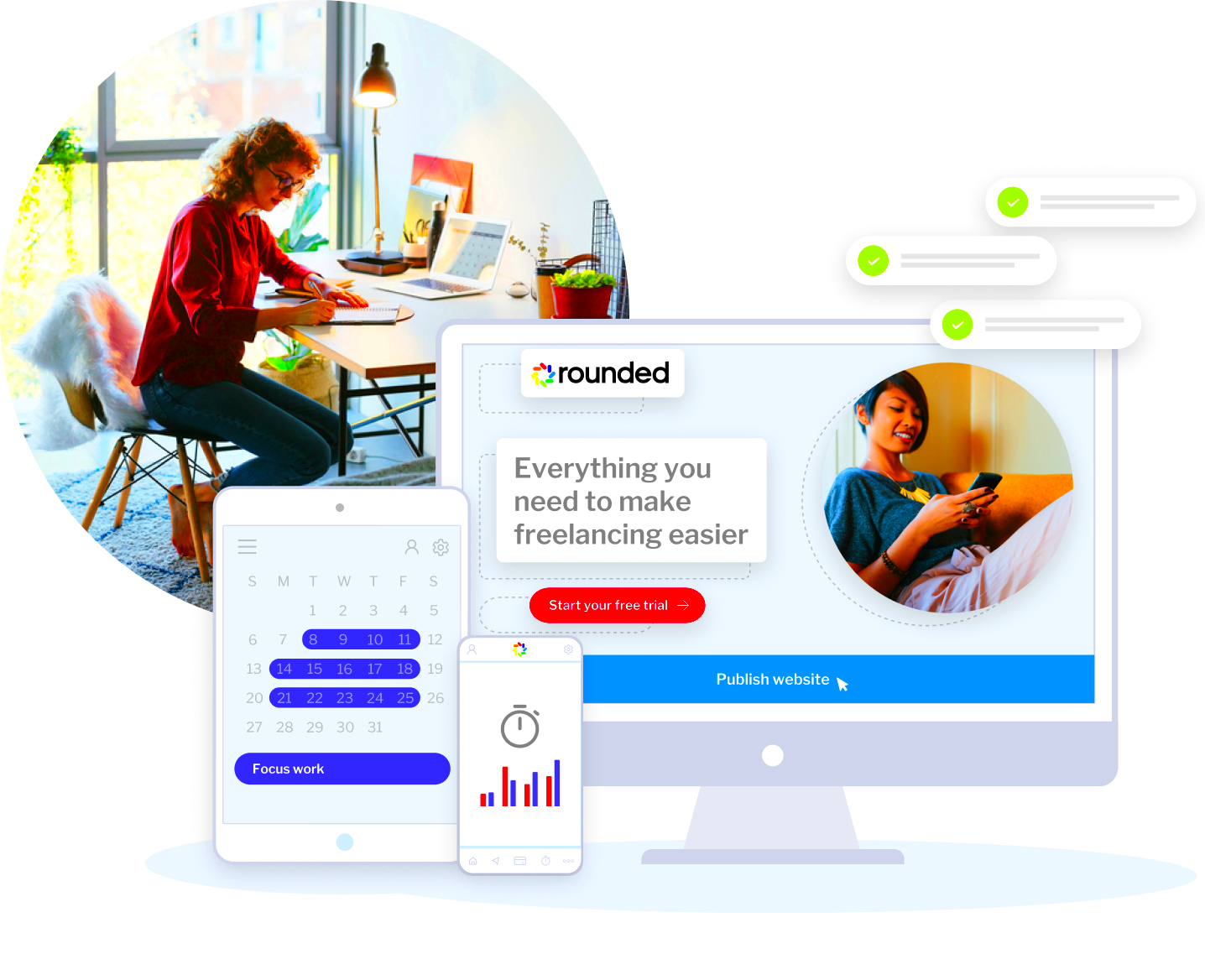Digital freelancing is a flexible way of working where individuals offer their services online. This approach allows you to work from anywhere, setting your hours and choosing your projects. With the rise of technology, many people are now turning to freelancing as a primary source of income or a side hustle. Understanding how digital freelancing works is essential to successfully launching your career.
Freelancers can be found in various fields, including writing, graphic design, web development, and marketing. The key is to identify what services you can provide and how they fit into the growing demand for remote work. In this section, we’ll explore what it means to be a digital freelancer and how to navigate this exciting world.
Benefits of Being a Digital Freelancer

Choosing to be a digital freelancer comes with numerous advantages. Here are some key benefits:
- Flexibility: You can set your own schedule and work from anywhere with an internet connection.
- Diverse Opportunities: There are countless projects available across various industries, allowing you to choose what interests you most.
- Independence: You are your own boss, which means you can make decisions that best suit your career goals.
- Potential for Higher Earnings: Many freelancers earn more than traditional employees because they can charge competitive rates for their skills.
These benefits make digital freelancing an appealing career choice for many people looking to balance work and personal life while pursuing their passions.
Also Read This: Average Earnings of Freelance Web Developers
Identifying Your Skills and Services

Before diving into the world of freelancing, it’s crucial to identify your skills and the services you can offer. Start by asking yourself:
- What are my strongest skills?
- What tasks do I enjoy doing?
- What problems can I solve for potential clients?
Once you have your answers, consider the following steps to refine your service offerings:
- Research the Market: Look for trends and in-demand skills in the freelancing world.
- Assess Your Competitors: Check what services similar freelancers are offering and how they market themselves.
- Define Your Niche: Focus on a specific area where you can excel, such as content writing for tech companies or social media management for small businesses.
Identifying your skills and services is a critical first step in establishing a successful freelance career. This clarity will help you target your marketing efforts and attract the right clients.
Also Read This: How to Promote Fiverr Gigs on Instagram
Creating an Effective Online Presence

In the digital age, having a strong online presence is crucial for freelancers. Your online image helps potential clients understand who you are and what you can offer. Whether you’re a writer, designer, or developer, showcasing your skills effectively can make a big difference in attracting clients.
Here are some essential steps to create an impactful online presence:
- Build a Professional Website: Create a simple, clean website that highlights your portfolio, services, and contact information. Use platforms like WordPress or Wix to get started.
- Optimize Your Social Media Profiles: Use LinkedIn, Twitter, and Instagram to share your work and connect with others in your field. Make sure your profiles are professional and up to date.
- Showcase Your Work: Use your website and social media to display your best projects. Include case studies that explain the process and results of your work.
- Engage with Your Audience: Regularly post content related to your industry. This could be tips, articles, or even behind-the-scenes looks at your work. Engaging with followers builds relationships and trust.
By following these steps, you’ll create an online presence that effectively communicates your skills and attracts potential clients.
Also Read This: How to optimize your Fiverr gig for search engines
Finding Clients on Freelance Platforms
Finding clients can be one of the biggest challenges for freelancers. Thankfully, there are many platforms designed to connect freelancers with clients looking for their services. Here are some popular freelance platforms to consider:
| Platform | Best For |
|---|---|
| Upwork | General freelancing across various fields |
| Fiverr | Offering services starting at $5 |
| Freelancer | Bidding on projects across multiple categories |
| 99designs | Graphic design projects |
When using these platforms, here are some tips to increase your chances of finding clients:
- Create a Strong Profile: Highlight your skills, experience, and showcase your best work.
- Apply for Relevant Jobs: Focus on projects that match your skills to increase your chances of getting hired.
- Communicate Clearly: Respond promptly to client inquiries and maintain professionalism in all communications.
By leveraging these platforms, you can find clients who are looking for the specific skills you offer.
Also Read This: How Do I Get Paid on Fiverr?
Managing Your Time and Projects
As a freelancer, time management is crucial. You’re responsible for managing your schedule and ensuring that projects are completed on time. Here are some strategies to help you stay organized and productive:
- Set Clear Goals: Define what you want to achieve each week and break it down into daily tasks.
- Use Project Management Tools: Tools like Trello, Asana, or ClickUp can help you track your tasks and deadlines.
- Establish a Routine: Find a work routine that suits you, whether that’s working in blocks of time or dedicating specific days to certain tasks.
- Limit Distractions: Create a work environment that minimizes distractions. Consider using apps that block social media during work hours.
By managing your time effectively, you can ensure that you meet deadlines and maintain a healthy work-life balance. Remember, staying organized not only helps you deliver quality work but also reduces stress and enhances your overall freelancing experience.
Also Read This: How to Add Additional Items to Your Current Order on Fiverr
Building a Strong Portfolio
Creating a strong portfolio is one of the most important steps in establishing your freelancing career. Your portfolio showcases your skills, creativity, and the quality of your work. It acts as a visual resume that potential clients will use to gauge your capabilities. A well-crafted portfolio can set you apart from the competition and help you land more projects.
Here are some key elements to consider when building your portfolio:
- Select Your Best Work: Choose pieces that highlight your skills and versatility. Quality is more important than quantity.
- Include a Variety of Projects: Show different types of work to demonstrate your range. This can include personal projects, client work, and any collaborations.
- Write Case Studies: Explain the context, your role, and the results achieved in each project. This gives potential clients insight into your thought process and problem-solving abilities.
- Keep It Updated: Regularly update your portfolio with new work and remove older pieces that no longer represent your skills.
Don’t forget to make your portfolio visually appealing. Use a clean layout and ensure that it is easy to navigate. Whether you create a website or use platforms like Behance or Dribbble, your portfolio should reflect your unique style and professionalism.
Also Read This: What Are Figures in Fiverr?
Frequently Asked Questions
As a new freelancer, you might have several questions about getting started and succeeding in the field. Here are some common FAQs along with helpful answers:
- How do I set my rates? Research what others in your field charge for similar services. Consider your experience and the value you provide when setting your rates.
- What should I do if I have no experience? Start by offering your services at a lower rate or even for free to build your portfolio. You can also take on small projects to gain experience.
- How do I handle difficult clients? Always communicate clearly and professionally. If issues arise, try to resolve them amicably. Set clear boundaries and expectations from the start.
- Should I specialize or be a generalist? Specializing can help you stand out and attract specific clients, but being a generalist allows for a broader range of opportunities. Consider what aligns with your skills and interests.
These FAQs provide insight into common challenges and decisions freelancers face. Don’t hesitate to seek advice from more experienced freelancers as you navigate your journey.
Conclusion
Launching a career as a digital freelancer can be an exciting and rewarding path. With the right strategies, you can create a successful freelance business that aligns with your lifestyle and passions. Remember to focus on building your skills, creating a strong online presence, and managing your time effectively.
Your portfolio is a powerful tool that showcases your abilities and attracts clients. Don’t be afraid to invest time in developing it and keeping it updated. As you grow in your freelance career, keep learning and adapting to the changing market.
Freelancing offers freedom and flexibility, but it also requires dedication and hard work. Embrace the journey, stay organized, and keep striving for improvement. Your efforts will pay off as you build a thriving freelance career!




